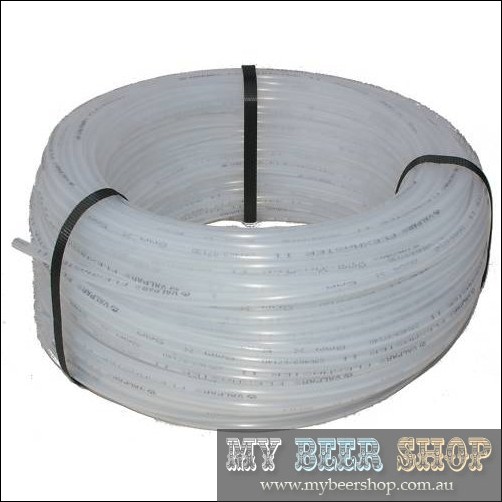You might want to clarify what the
Question is, what problem are you having that you need to solve?
Try phrasing it in kPa or Bar, all the maths works better in metric.
Tube cracking around barbs usually means the line is too small or cheap crap material. You can stretch 5mm line onto a 6mm barb, (a 4mm one wont last long - stretched too thin) Heat the line until it looks transparent (well less opaque) only heat the length of the barb plus a couple of mm. Push the line onto the barb, carefully pour boiling water over the junction, (I use the steam wand on the coffee maker same/same) the line will try to return to its original size shrinking up as much as it can, this will also relieve a lot of the stress in the plastic - makes the time to fail a lot longer.
On the gas side it doesn't matter how big or long the lines are (within a very large margin) the pressure will equalise pretty quickly. If you are having problems with line splitting (that will cost you a bottle of gas) try better quality line and try 6mm rather than thinner, it wont be as stressed and will last longer (decades).
Try to think in kPa rather than PSI, there is a pressure temperature equilibrium that is perfect for most beers, this is expressed in g/L of dissolved CO2 (Americans use Volumes), at any given pressure and temperature you will get a specific amount of dissolved CO2 (fizz).
At the same temperature more pressure will increase the dissolved CO2
At the same pressure lower temperatures will increase the dissolved CO2
You need to decide how much dissolved CO2 you want for the beer you have made, this gives you the target g/L
Measure the temperature of the beer.
Set your regulator to give that amount of dissolved CO2
Wait for it to all equilibrate.
Have a read of this
Braukaiser Carbonation Tables.
At the foot of the table
View attachment 112630
Beer like Tooheys New, Carlton Draught and XXXX are going to be somewhere in the 4.5-5g/L range
Then comes the line length to the tap, the longer it is the slower the flow, if it was short the beer might be coming out fast enough to do a U turn in the bottom of the glass had hit you in the eye.
A longer thinner line impedes flow, trick being to work out how much line to use. There are calculators on line but you need to pin down an operating pressure first.
Mark






